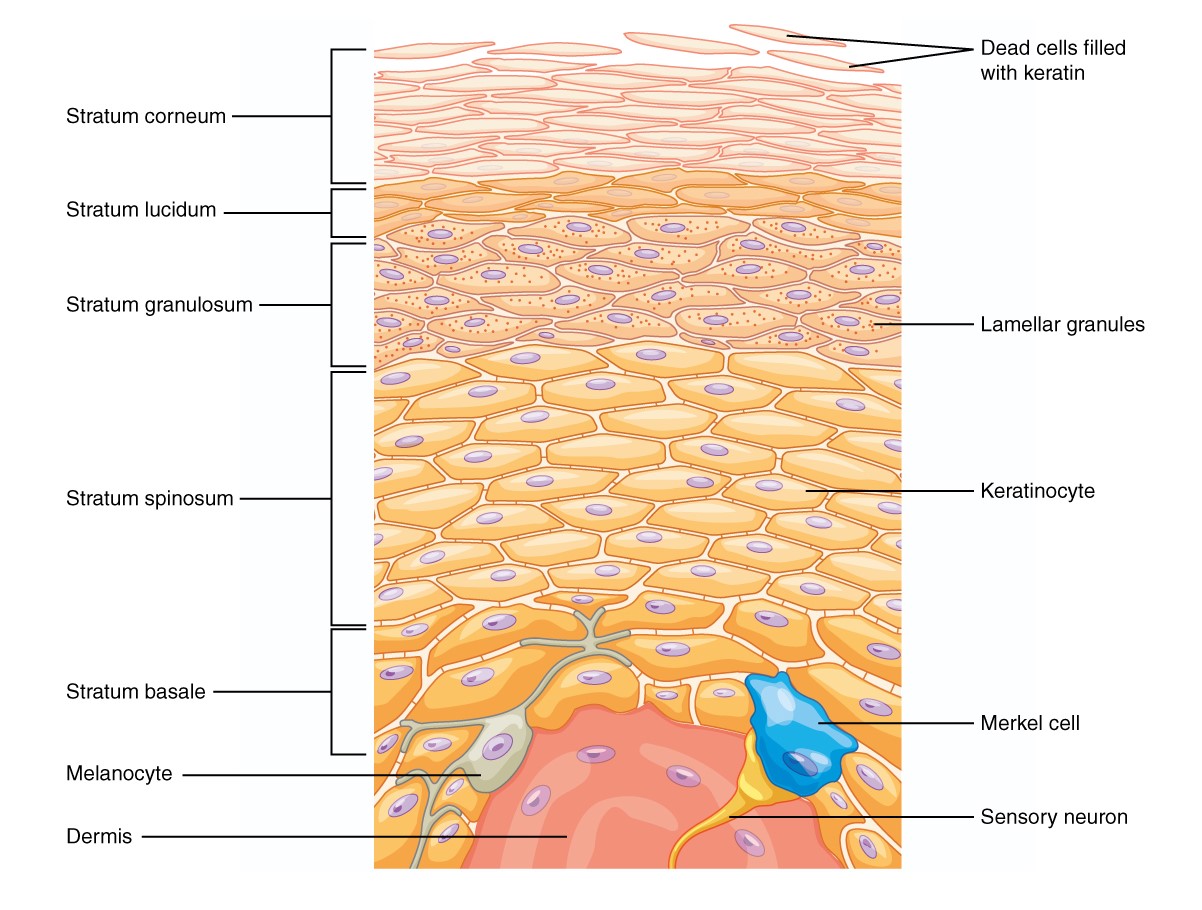Playlist
Show Playlist
Hide Playlist
Derivatives of the Skin: Eccrine, Apocrine and Sebaceous Glands
-
Slides Derivatives of the Skin Eccrine Apocrine Sebaceous Glands.pdf
-
Download Lecture Overview
00:01 The second skin appendage that we're moving on after the hair is the sweat gland. 00:06 It's got a secretory portion and an excretory duct. 00:13 When you have a problem with the sweat gland, you get a condition called syringoma, where you get fine papules on the face. 00:23 The third gland is the apocrine gland, and it opens into the hair follicle. 00:29 And when you have a problem with apocrine glands, the clinical condition that you get is hydrogenases suppurativa where you get abscess like or folliculitis like lesions on the areas where the apocrine glands are concentrated. 00:45 By the way, the largest apocrine glands that we have is the breast. 00:50 And that you see in females. 00:52 The next gland that we are going to speak about is the sebaceous gland. 00:58 This gland produces sebum and opens right into the hair follicle. 01:03 And this is the gland that makes our skin oily, especially for adolescents when they have acne. And it also lubricates our skin and hair. 01:12 What happens when you have an abnormality with the sebaceous gland or increased sebum production? That's what you see in patients who have acne. 01:21 You can also get a condition called sebaceous hyperplasia. 01:24 Hyperplasia, which means there's an increased number of of the cells that are found within the sebaceous glands.
About the Lecture
The lecture Derivatives of the Skin: Eccrine, Apocrine and Sebaceous Glands by Ncoza Dlova is from the course Introduction to Dermatology.
Included Quiz Questions
Which of the following statements best describes syringomas?
- Syringomas are benign eccrine sweat duct tumors often found on the face.
- Syringomas are malignant sebaceous gland tumors found on the scalp.
- Syringomas are benign tumors of the hair follicles usually seen on the arms.
- Syringomas are viral warts caused by HPV infection on the face.
- Syringomas are cystic formations filled with keratin commonly found on the back.
Customer reviews
5,0 of 5 stars
| 5 Stars |
|
5 |
| 4 Stars |
|
0 |
| 3 Stars |
|
0 |
| 2 Stars |
|
0 |
| 1 Star |
|
0 |




